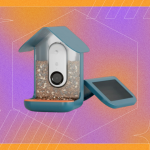Hannibal Hanschke-Pool/Getty Images
- Starlink is SpaceX’s broadband service that beams down internet from satellites launched into orbit.
- Since its launch in October, it has more than 10,000 users and operates in more than six countries.
- Here’s everything you need to know about Elon Musk’s Starlink.
- Visit the Business section of Insider for more stories.
Elon Musk is inching ever closer to fulfiling his dream of creating super-fast internet around the world, which beams down from satellites in orbit to Earth.
Since its launch in October, SpaceX’s Starlink internet has reached more than 10,000 users globally and started offering $99 preorders of the service to more countries and cities worldwide.
Starlink’s public beta test, known as “Better Than Nothing Beta,” has been a big hit with those living in remote areas of northern US, where it was first rolled out.
What’s the hype about Starlink?
SpaceX is building an expansive satellite internet network in space called Starlink.
The aerospace company launched its first batch of Starlink satellites into orbit in May 2019. Now, it has over 1,200 working satellites prepped for the service. The goal is to have up to 42,000 satellites in orbit by mid-2027.
The satellites are strapped onto the top of SpaceX’s Falcon 9 rocket and blasted into orbit, usually releasing 60 satellites per launch.
The goal is to create a high-speed broadband system generated by satellites which envelope Earth and provide internet to people especially in rural areas without connection.
Starlink isn’t cheap
A subscription to the beta is currently $99 a month. It costs a further $499 for the Starlink kit, which includes a mounting tripod, a WiFi router, and a terminal to connect to the satellites.
In February, SpaceX began offering preorders of Starlink to other countries so users can now put down a $100 deposit to get their hands on the service once it becomes available. The deposit will be applied to the amount due on the Starlink kit.
Overall users will be paying $600 upfront for Starlink.
Users the UK are paying £439 for the kit and £89 for the subscription fee. Compared to other internet providers that charge £79 per month for speeds of up to 516 Mbps, this isn’t cheap.
On the SpaceX side, the company in December won $885 million in federal subsidies to expand Starlink, but small internet service providers say this shouldn’t be allowed because Musk’s firm is using “unproven” technology.
The fastest speed recorded so far is 215 Mbps
SpaceX said in an email to Starlink beta test subscribers in October that they should expect speeds between 50 and 150 Mbps, with intermittent outages. But some users are hitting much higher speeds.
A list compiled by Reddit’s Starlink community shows the fastest download speed so far was 209.17 Mbps, recorded in New York. One person in Utah recorded in December their speed test showing 215 Mbps.
Starlink has even reached speeds of 175 Mbps in freezing temperatures, high winds and snow. Users have been impressed with the terminal heating up enough to melt any snow or frost on top of it.
Anonymous
It’s available to preorder in six countries
Starlink was initially operating in parts of the northern US, southern Canada, and, most recently, in the UK.
In February, Starlink began opening up preorders to other parts of the world.
People in Australia, New Zealand, Mexico, and parts of the US and Canada – where Starlink is not yet up and running – confirmed on Twitter and Reddit they were able to put down a deposit to get the internet service in mid to late 2021.
More countries could green-light Starlink this year, including Spain, Italy, India, Japan and the Caribbean, according to a report from Teslarati.
Insider explained how to sign up for the service which works on “first-come, first-served basis.”
Musk wants to beam its Starlink satellite internet to moving vehicles
SpaceX wants to connect Starlink to ships, planes, trucks, and RVs, according to a request the company filed to the Federal Communications Commission (FCC) on March 9.
The space company is planning to use antennas – “electrically identical” to existing user terminals – which can mount to vehicles, vessels, and aircraft, the filing said.
Musk tweeted that the antennas would not connect Tesla cars to Starlink because the terminals are “much too big.”
“This is for aircraft, ships, large trucks & RVs,” the billionaire said.
Starlink has helped rural communities get online
SpaceX agreed in October to provide internet to a rural school district in Texas next year via Starlink. A total of 45 families will get internet access in the area, followed by an additional 90 families later on.
Scott Muri, the district’s superintendent, told Insider he agreed to the deal because so many students’ families have “zero internet” and no conventional way to get it.
Then in December, SpaceX connected up Pikangikum First Nation, a remote 3,000-person indigenous community in north-western Ontario, to Starlink. Before the internet service, Pikangikum couldn’t offer higher education or healthcare, and struggled with high suicide rates. Now, they’re able to access everything.
Dave Brown, CEO of FSET, the company that linked up SpaceX and Pikangikum, said in an interview with Insider: “We took a community that was one of the most technologically disadvantaged anywhere in the world. They’ve now become one of the most technologically advanced, yet are still remote, living where they are and not having to move.”
The SpaceX workforce is growing
As Starlink rollout ramps up around the world, SpaceX has nearly 10,000 employees, court documents from February 26 showed.
In May 2020, Gwynne Shotwell, SpaceX’s chief operating officer, said the company had around 8,000 staff.
With hundreds of vacancies available on its website, it looks like SpaceX won’t be stagnating in size any time soon.
Its workforce is young and overwhelmingly male, according to data from a huge COVID-19 study the company took part in.
Have you setup Starlink recently? How are you finding it? Get in touch with this reporter via email: kduffy@insider.com.
Powered by WPeMatico






